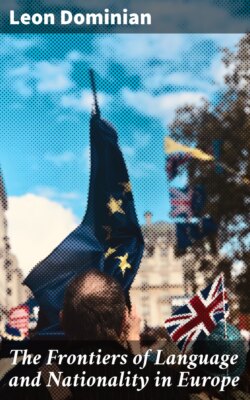Читать книгу The Frontiers of Language and Nationality in Europe - Leon Dominian - Страница 7
На сайте Литреса книга снята с продажи.
FOOTNOTES:
ОглавлениеTable of Contents
[1] E. C. Semple: The Barrier Boundary of the Mediterranean Basin and Its Northern Breaches as Factors in History, Ann. Assoc. Amer. Geogr., Vol. 5, 1915, pp. 27–59.
[2] The Neolithic lasted longer north of the Alps.
[3] The dialects or patois spoken today in France all fall under one of these two languages. They can be classified as follows:
| Langue d’Oc | |
| Patois | Spoken in the Departments of |
| Languedocian | Gard, Hérault, Pyrénées-Orientales, Aude, Ariège, Haute-Garonne, Lot-et-Garonne, Tarn, Aveyron, Lot, Tarn-et-Garonne. |
| Provençal | Drôme, Vaucluse, Bouches-du-Rhône, Hautes- and Basses-Alpes, Var. |
| Dauphinois | Isère. |
| Lyonnais | Rhône, Ain, Saône-et-Loire. |
| Auvergnat | Allier, Loire, Haute-Loire, Ardèche, Lozère, Puy-de-Dôme, Cantal. |
| Limousin | Corrèze, Haute-Vienne, Creuse, Indre, Cher, Vienne, Dordogne, Charente, Charente-Inférieure, Indre-et-Loire. |
| Gascon | Gironde, Landes, Hautes-Pyrénées, Basses-Pyrénées, Gers. |
| Langue d’Oïl | |
| Norman | Normandie, Bretagne, Perche, Maine, Anjou, Poitou, Saintonge. |
| Picard | Picardie, Ile-de-France, Artois, Flandre, Hainaut, Lower Maine, Thiérache, Rethelois. |
| Burgundian | Nivernais, Berry, Orléanais, Lower Bourbonnais, part of Ile-de-France, Champagne, Lorraine, Franche-Comté. |
[4] The terminal s, a distinctly Latin form, is seen to persist in this early stage of the language.
[5] Niederdeutsch is derived directly from Old Saxon, the language which enters into the composition of the Anglo-Saxon current in England at the time of the Norman Conquest.
[6] Cf. Sheets 12a, Europe, Flusz-Gebirgskarte, and 12c, Europa, Sprachen- und Völkerkarte, both 1:12,000,000, in Debes: Handatlas.
